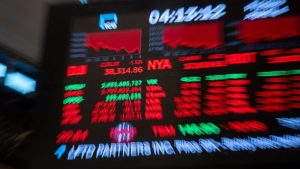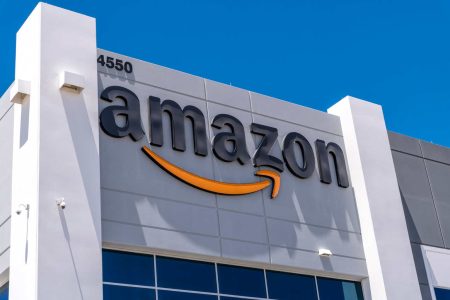Investment Thesis
Nordstrom (NYSE:JWN) has undergone significant structural changes in its business model recently. We view these structural changes as a pivotal catalyst for Nordstrom’s stock performance as they enabled Nordstrom to achieve profitable growth. These structural changes include improving rack performance, increasing inventory productivity and optimizing supply chain capabilities. Nordstrom has consistently managed to achieve profitability that beats analysts’ estimates in the last two quarters because of these changes.
However, its stock price hit its pandemic low again recently. We believe this is because market is concerned about the impending recession and Nordstrom is in the discretionary spending sector. We believe the recent low price presents a great buying opportunity for patient investors.
Tough operating environment for Nordstorm in its recent years
The COVID-19 pandemic presented Nordstrom with significant inventory challenges in 2020. The store closures prompted the company to take actions, including the cancellation of orders and negotiations with suppliers aimed at reducing inventory levels and liquidating existing stock.
In 2021, as restrictions gradually eased, Nordstrom encountered new obstacles as it struggled to restock its stores due to persistent supply-chain issues. However, throughout 2022, Nordstrom adapted its strategy by pulling forward orders in an effort to navigate around the supply-chain challenges. Unfortunately, this shift coincided with a notable deceleration in demand, leading to an excess of inventories that required clearance.
As we entered 2023, the retail landscape underwent a significant change due to the rapid increase in interest rates, which in turn led to a decrease in consumer spending.
Many of these challenges lie beyond the control of Nordstrom’s management team, and similar trends have been observed in numerous other retailers. The most recent quarterly results from various retailers have underscored a decrease in consumer demand for apparel.
From one perspective, this suggests that Nordstrom’s business model may not be sufficiently adaptable to its operating environment, thus exposing the company to substantial risks when that environment undergoes changes. Nonetheless, it’s crucial to note that Nordstrom has undertaken significant alterations to its business structure since the pandemic, steering its focus towards profitable growth.
The business turnaround is around the corner
Over the past decade, Nordstrom has embarked on numerous growth initiatives, yet a significant proportion of these endeavors have yielded little returns. For instance, the expansion into the Canadian market, the acquisition of Trunk Club, and the introduction of lower-priced offerings at Nordstrom Rack. The pandemic has turned its business upside down and Nordstrom has made a big change to its business since then to prioritize profitable growth and returning to its fundamental strength: offering sought-after premium items. As part of this change, Nordstrom exited the Canadian market in 2023 due to its inability to generate profit from that venture. Similarly, the Trunk Club business was discontinued in early 2022. Nordstrom has also taken a new approach by sourcing more premium brands for its rack brands, moving away from the sale of lower-tier brands that do not align with its customer base’s preferences.
We are of the opinion that these strategic changes represent the correct approach for Nordstrom’s business. Firstly, pursuing revenue growth without a clear path to profitability would be an inefficient allocation of corporate resources. Secondly, Nordstrom has built a reputation among its customers for its premium brand offerings, and the company is now aligning its operations with this core strength. Nordstrom’s most recent two earnings reports have demonstrated that its business operations are on a recovery path.
In FY2023Q1 Nordstrom delivered non-GAAP EPS of $0.07 which beats analysts estimates by $0.18. In FY2023Q2, Nordstrom delivered Non-GAAP of $0.84 which beats analysts estimates by $0.39. Let’s delve into its latest FY2023Q2 earning report and review its business recovery progress.
Despite a declining revenue it delivered a better EPS
In FY2023Q2, Nordstrom experienced an 8.3% decline in net sales compared to FY2022. However, its EPS saw an increase, rising to $0.84. Additionally, despite the reduction in sales revenue, the SG&A% remained relatively stable at 32.8%. This metric suggests a compelling sign that Nordstrom’s profitable growth strategy is proving effective. The ability to enhance profitability even when facing a decrease in sales demonstrates the efficacy of this strategy.
Rack business performance is improving
The net sales in Nordstrom’s rack business witnessed a 4.1% decrease when compared to FY2022. This performance marks a significant sequential improvement from FY2023Q1, which had experienced a more substantial sales decline of 11.9%. It’s important to note that this decline in sales has been influenced by Nordstrom’s strategic choice to discontinue unprofitable store fulfillment, a decision that impacted sales by 500 basis points. When excluding this impact, the net sales of the rack business have, in fact, shown an increase.
Nordstrom Rack is currently undergoing a strategic transformation by incorporating more premium brands into its stores, a move driven by customer preferences. We are confident that Nordstrom’s effective execution of this strategy, aimed at featuring premium brands within its rack stores, has significantly contributed to its ongoing business recovery. Let’s hear directly from Nordstrom’s management on this.
At Nordstrom Rack, we are delivering on our promise of offering great brands at great prices, and our teams made significant progress on our initiatives to improve both sales and profitability. As we shift our assortment mix to include more of the brands we know our customers respond to, we are seeing results improve through higher sell-through and faster inventory turns, giving customers newness each time they shop at Nordstrom Rack. In the second quarter, sales from strategic brands came in at our target of 65%, and we’ve planned our on order for the second half similarly to meet our goal.
In our assessment, Nordstrom has successfully identified a distinctive strategy for its rack stores, focusing on providing premium brands at exceptional value. This approach sets it apart from competitors who positions themselves within lower price tiers. Nordstrom has opened 8 new rack stores in 2023, with plans to launch an additional 11 by year-end. We look forward to see the business fully recovered and get back on a growth path again.
Nordstrom entered with FY2023H2 with a very healthy inventory
Nordstrom has entered FY2023 H2 with a favorable inventory position, thanks to its strong anniversary sell-through and being more agile with its inventories. Its total inventory has decreased by 18% compared to FY2022. A noteworthy trend that we’ve observed is that many other retailers are also entering the second half with healthier inventory levels. This stands in stark contrast to FY2022, when the majority of retailers entered the holiday season with excessive inventories. Given this shift, we believe that Nordstrom is well-positioned to capitalize on this opportunity for expanding gross margins in the latter half of 2023.
Nordstrom’s valuation
Our current thesis revolves around the expectation that Nordstrom’s business will ultimately return to its pre-pandemic levels in due course. As a basis for this, we predominantly consider Nordstrom’s performance in 2019 as a benchmark to determine its inherent value. Furthermore, we intend to delve into the conventional Price-to-Earnings (P/E) valuation method as a means to assess its valuation more comprehensively.
|
(In millions) |
Estimates based on 2019 result |
|
Net sales |
$15,132 |
|
Credit card revenues, net |
$392 |
|
Gross profit |
$5,200 |
|
Gross Margin |
34.4% |
|
SG&A |
($4,808) |
|
SG&A % |
31.8% |
|
EBIT2 |
$784 |
|
Interests |
($102) |
|
EBT |
$682 |
|
Tax Rate |
27% |
|
Net earnings |
$496 |
|
PE-10 |
$5 billion |
|
PE-15 |
$7.4 billion |
At present, Nordstrom’s market value stands at $2.5 billion. According to our analysis, our model suggests that the stock holds a potential upside ranging from 2X to 3X its current value. While awaiting the complete recovery of its business, there are two distinct advantages to holding shares:
Firstly, Nordstrom is currently offering a dividend yield of 4.9%. This dividend is underpinned by the company’s robust balance sheet and strong cash flow, ensuring its sustainability.
Secondly, Nordstrom seems to be on the right path to scale its rack business and this can provide additional upside for the stock price.
Risk
Competition
Nordstrom, in its history, has held a strong reputation as a retailer brand. It effectively transitioned its business online. However, operating within a fiercely competitive landscape requires strong management execution.
There have been instances in the past where the management team displayed worrisome signs related to inventory execution even prior to the pandemic’s onset. We hope that the management has learned valuable insights from these experiences and is now maintaining a rigorous approach to inventory management. Without such discipline, the business could be prone to volatility in its performance, subject to the ebb and flow of inventory productivity.
High interest rate environment
The prevailing high interest rate environment is casting a shadow over consumer demand, consequently impacting Nordstrom’s business, given its inventories are mostly discretionary items. In the most recent earnings call, the management emphasized that the delinquency rate for its store-branded credit cards has surpassed pre-pandemic levels. This increase in delinquency rate further compounds the challenges Nordstrom faces due to the high interest rates.
This environment of elevated interest rates poses a notable challenge to the company’s turn-around strategy, potentially prolonging the anticipated duration of the turnaround process.
Conclusion
Nordstrom has undergone significant structural changes in its business model, which have enabled it to achieve profitable growth. We view these structural changes as a pivotal catalyst for Nordstrom’s stock performance. Market currently mis-priced this security because of the concern for the impending recession. We view this as a perfect buying opportunity for patient investors.
Read the full article here















